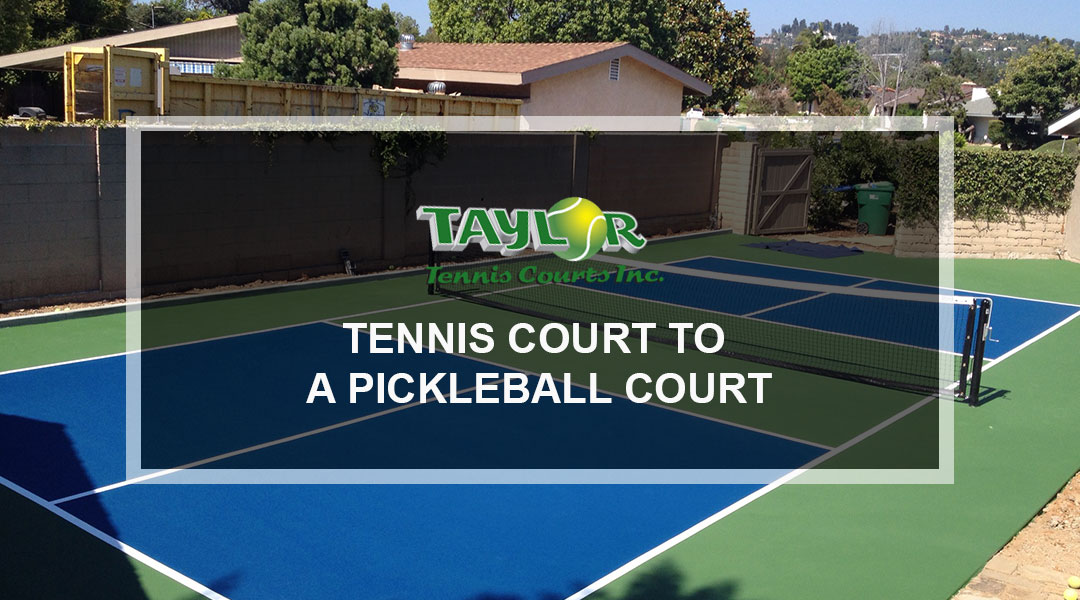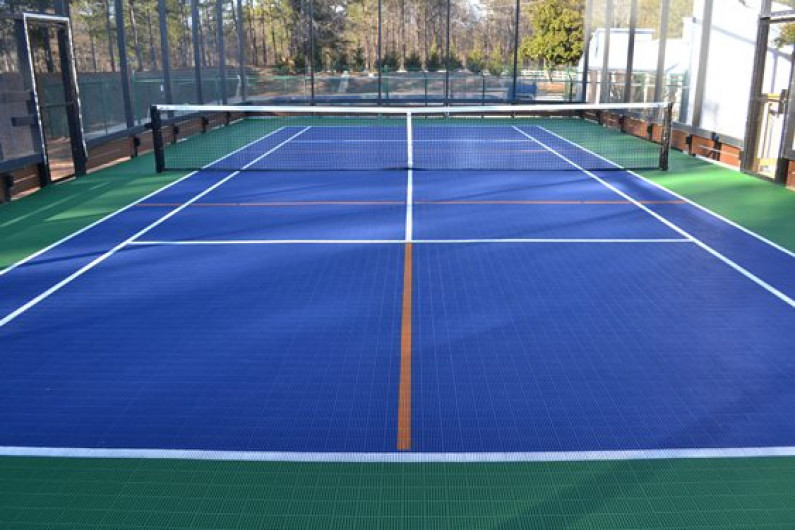Developing a Pickleball Court Construction-- Specialist Construction for Quality Play
Developing a Pickleball Court Construction-- Specialist Construction for Quality Play
Blog Article
Lasting Practices in Pickleball Court Building And Construction You Need To Know
As the appeal of pickleball remains to rise, so too does the requirement for lasting techniques in court building and construction. This method not just addresses environmental problems however also enhances the durability and capability of the courts. From selecting environmentally friendly products to carrying out efficient drain and energy-saving lighting services, there are various strategies to consider. Yet, the effect of these practices prolongs much past the court itself. Comprehending exactly how each aspect adds to an extra sustainable future invites additionally exploration right into the elaborate equilibrium between recreational development and environmental stewardship.
Selecting Eco-Friendly Materials
Choosing green materials is a crucial action in the building of sustainable pickleball courts. The choice of sustainable products not just decreases environmental impact but additionally improves the durability and efficiency of the court. Secret products include reused rubber for the surface, which supplies superb resilience and shock absorption while drawing away waste from land fills.
Additionally, making use of in your area sourced products decreases transportation discharges and supports local economic situations. Pickleball court construction. Using native hardwoods for fencing and seats can offer a lasting aesthetic while making certain resilience versus the aspects.
Incorporating absorptive materials for court foundations can even more add to sustainability by permitting for all-natural water drainage and lowering runoff. These selections not only shield local communities however also promote healthier play atmospheres.
Effective Water Drainage Solutions
While the selection of green products is necessary, applying reliable drain options is similarly crucial for keeping lasting pickleball courts. Appropriate water drainage not only safeguards the court surface area from water damages yet also reduces disintegration and drainage, advertising ecological honesty.
Effective drainage systems can consist of absorptive paving, which allows water to infiltrate the ground rather than pooling externally. This minimizes the possibility of standing water, which can bring about mold and various other upkeep problems. Additionally, including purposefully put water drainage channels and swales can direct excess water away from the court area, making certain a completely dry playing surface and avoiding soil erosion.
Using indigenous plant life in the landscape design around the courts can additionally improve water drainage by taking in excess water and lowering drainage. These plants require much less irrigation and advertise biodiversity, lining up with lasting methods.
In addition, it is important to routinely keep the drainage system to ensure its long-lasting effectiveness. This includes cleaning debris and tracking for blockages. By focusing on effective water drainage solutions, pickleball court constructors can significantly add to the sustainability and longevity of the center, ultimately benefiting both players and the setting.
Energy-Efficient Illumination Options
As the demand for pickleball remains to grow, integrating energy-efficient illumination choices into court layout has come to be increasingly essential for sustainability. Typical lights systems commonly consume excessive power, adding to higher functional prices and ecological impact. As a result, adopting contemporary, energy-efficient modern technologies is vital for both brand-new buildings and renovations.
LED (Light Emitting Diode) lights attracts attention as a leading selection as a result of its long life and energy financial savings (Pickleball court construction). Compared to traditional lighting, LEDs make use of approximately 75% less energy and can last up to 25 times longer, substantially reducing upkeep costs. In addition, the directional nature of LED illumination reduces light air pollution, ensuring that illumination is concentrated on the court instead of surrounding areas.

Lasting Surface Alternatives
Exploring sustainable surface area choices for pickleball courts has actually acquired traction among players and contractors alike. The emphasis on eco-friendly products not only aligns with the growing ecological recognition but additionally boosts the performance and resilience of the courts.
This product gives exceptional shock absorption, decreasing the threat of injuries for players while advertising sustainability. These ceramic tiles are easy to mount and replace, and their adaptability Continued enables for numerous court configurations.
All-natural grass courts are also arising as a sustainable choice, advertising biodiversity and reducing the heat island effect. However, they require routine maintenance and water, which might not align with all sustainability goals.

Water Conservation Methods

An additional efficient technique involves the installation of rain harvesting systems. These systems gather and store rainwater for usage in keeping court surfaces and landscape design. This technique not only preserves safe and clean water but additionally decreases reliance on local sources.
In addition, utilizing drought-resistant landscape design around the courts is vital. Indigenous plants call for much less water and are better adapted to regional climate problems, hence reducing general water consumption. Furthermore, making use of efficient watering systems, such as drip irrigation, guarantees that water is supplied directly to plant roots, lessening dissipation and waste.
Conclusion
Integrating sustainable practices in pickleball court building considerably adds to environmental conservation and source effectiveness. By prioritizing these methods, the construction of pickleball courts can line up with more comprehensive ecological goals while advertising long life the original source and functionality within neighborhoods.
As the appeal of pickleball continues to increase, so as well does the demand for lasting practices in court building.Choosing environmentally friendly products is an essential step in the building and construction of sustainable pickleball courts. By prioritizing energy-efficient illumination choices, pickleball court contractors can contribute to a much more lasting future while fulfilling the demands of gamers and stakeholders alike.Including sustainable surface alternatives not only improves the performance of pickleball courts however likewise leads the method for carrying out efficient water conservation methods.Integrating sustainable methods in pickleball court building dramatically adds to environmental preservation and resource efficiency.
Report this page